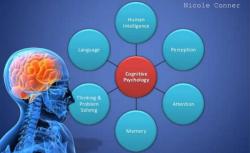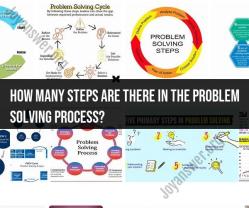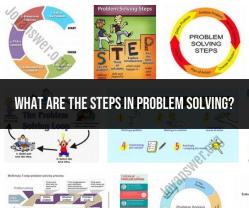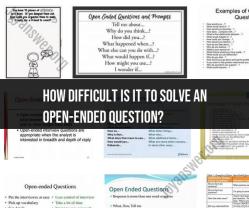How to use fact finding skills to solve a problem?
Fact-finding skills play a crucial role in problem-solving by helping to gather accurate information and understand the underlying issues. Here's how you can use these skills effectively:
1. Define the Problem:
- Identify Information Needs: Determine what information is essential to understanding the problem.
- Ask Questions: Start by asking open-ended questions to gather details about the problem and its context.
2. Conduct Research:
- Gather Information: Use various sources such as books, articles, databases, interviews, surveys, and credible online resources to collect relevant data.
- Verify Sources: Ensure the credibility and reliability of sources to gather accurate and unbiased information.
3. Analyze Information:
- Evaluate Sources: Assess the relevance and reliability of collected information.
- Organize Data: Organize and categorize the collected data to identify patterns or trends that might contribute to understanding the problem.
4. Fact Validation:
- Verify Accuracy: Cross-check facts and data to ensure accuracy and consistency. Avoid relying on unverified or anecdotal information.
- Consider Multiple Perspectives: Explore different viewpoints or opinions related to the problem to gain a comprehensive understanding.
5. Identify Root Causes:
- Dig Deeper: Use the gathered facts to delve into the underlying causes of the problem. Look beyond surface-level symptoms to identify the core issues.
6. Decision Making:
- Utilize Evidence: Base decisions on verified facts and evidence rather than assumptions or opinions.
- Weight of Information: Assess the importance and relevance of each piece of information in relation to the problem-solving process.
7. Communicate Findings:
- Clarity in Reporting: Present your findings clearly and concisely to stakeholders or team members involved in solving the problem.
- Recommend Solutions: Use factual information to support proposed solutions or recommendations.
8. Adapt and Iterate:
- Iterative Process: Problem-solving is often iterative. Use new information or insights to refine your understanding of the problem and adjust strategies accordingly.
- Continuous Learning: Embrace a learning mindset, recognizing that fact-finding skills improve with practice and experience.
By honing fact-finding skills and employing them systematically throughout the problem-solving process, you can gather accurate, relevant, and reliable information. This information becomes the foundation for understanding the problem comprehensively and finding effective solutions.
1. Applying Fact-Finding Skills in Problem-Solving
Fact-finding is a crucial aspect of problem-solving, enabling individuals and organizations to gather accurate information, identify root causes, and make informed decisions. Effective fact-finding involves a systematic approach to obtaining relevant and reliable data from various sources.
Steps in Applying Fact-Finding Skills for Problem-Solving:
Define the Problem: Clearly articulate the problem to be addressed, ensuring a shared understanding among all parties involved.
Identify Information Needs: Determine the specific information required to fully understand the problem and its potential solutions.
Gather Information: Employ various methods to collect relevant data, such as interviews, surveys, observations, and document reviews.
Analyze Information: Organize, interpret, and evaluate the gathered information to identify patterns, trends, and potential root causes.
Verify Information: Cross-check and validate the information to ensure its accuracy and credibility.
Use Findings to Inform Decisions: Utilize the insights gained from fact-finding to develop effective solutions and make informed decisions.
2. Methodologies Enhancing Fact-Finding for Problem-Solving
Various methodologies can enhance the effectiveness of fact-finding in problem-solving:
Root Cause Analysis (RCA): RCA involves systematically identifying the underlying causes of problems, enabling targeted solutions.
Five Whys: This technique involves repeatedly asking "why" to uncover the root cause of a problem by drilling down through layers of causation.
Fishbone Diagram (Ishikawa Diagram): This visual tool helps identify and categorize the factors contributing to a problem, facilitating comprehensive analysis.
The 5 Ws and 1 H: This method involves asking and answering six key questions (who, what, when, where, why, and how) to gather essential information.
SWOT Analysis: This framework helps identify internal Strengths and Weaknesses, as well as external Opportunities and Threats, providing valuable insights for problem-solving.
3. Real-Life Examples of Fact-Finding in Problem-Solving
Medical Diagnosis: Doctors use fact-finding skills to gather patient history, conduct physical examinations, and order diagnostic tests to identify the underlying cause of medical problems.
Engineering Design: Engineers employ fact-finding to gather data on material properties, environmental factors, and user needs to design effective and safe products.
Business Process Improvement: Businesses use fact-finding to identify inefficiencies, bottlenecks, and customer pain points, enabling process improvement initiatives.
Environmental Investigation: Environmental scientists gather data on soil, water, and air samples to identify pollution sources and develop remediation strategies.
Legal Casework: Lawyers use fact-finding to gather evidence, interview witnesses, and conduct research to support their clients' cases.
These examples illustrate the wide-ranging applications of fact-finding in solving problems across various domains. By effectively gathering, analyzing, and utilizing information, individuals and organizations can make informed decisions, address challenges effectively, and achieve their goals.








